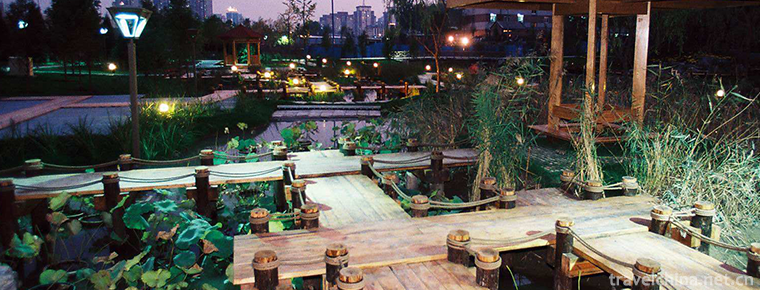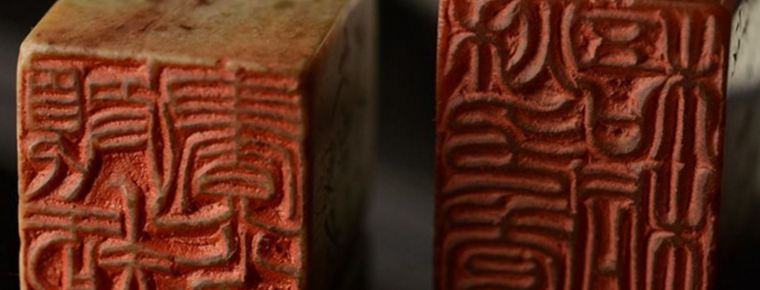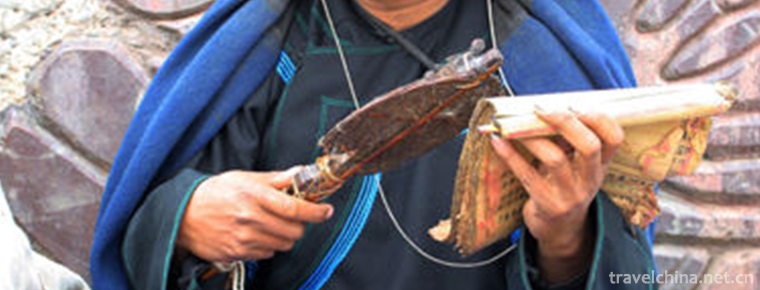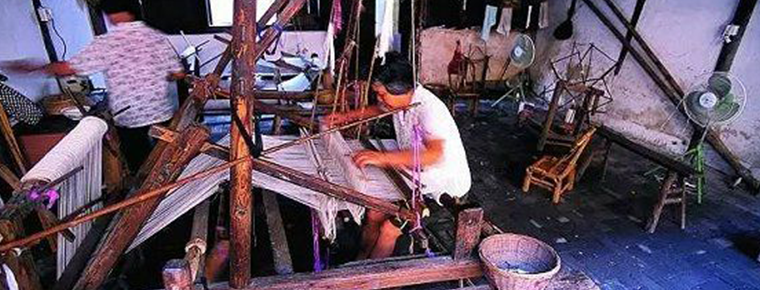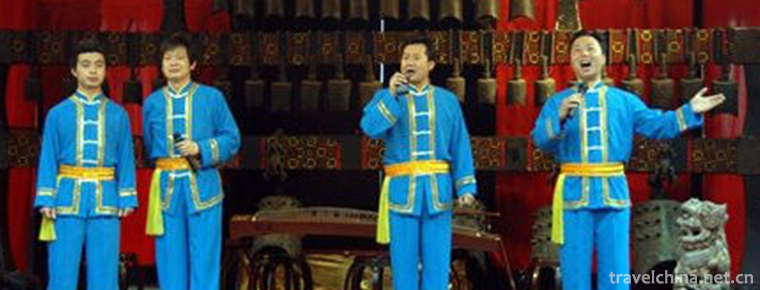Yesanpo Scenic Area Laishui County Baoding
The Yesanpo Scenic Area of Laishui County, Baoding City, Hebei Province, is located in Laishui County, Baoding City. The Taihang Mountains and Yanshan Mountains meet at a distance of 100 kilometers from Beijing, the capital of China, with a total area of 498.5 square kilometers.
The Yesanpo Scenic Area in Laishui County, Baoding is a national AAAAA tourist area, a National Forest Park and a national geological park. Yesanpo Scenic Area mainly includes Bailixia Natural Scenic Area, Juma River Scenic Area, Baicaoban Scenic Area, Yugudong Scenic Area, Longmen Tianguan Scenic Area, Jinhua Mountain Scenic Area, Paradise Lost Lavender Scenic Area, Ethnic Park, etc.
In January 2017, the National Development and Reform Commission issued the National Red Tourism Classic Scenic Spots List, and Yesanpo Scenic Spot in Laishui County, Baoding, was included in the Chinese Red Tourism Classic Scenic Spots List.
The Yesanpo Scenic Spot in Laishui County, Baoding, is located in Laishui County, Hebei Province, with a north latitude of 38 degrees 39 points and an east longitude of 104 degrees 04 points. It is located at the intersection of Taihang Mountain and Yanshan Mountain Ranges, 100 kilometers from Beijing, the capital, and 110 kilometers from Beijing, with a total area of 498.5 square kilometers.
topographic features
The Yesanpo scenic spot in Laishui County, Baoding is located in a special geotectonic location. On the northern end of the Eastern Branch of the Xiongqiao Taihang Mountain deep fault-Zijingguan deep fault zone, which is the most fragile and strong tectonic movement within the North China plate, there are many faults, folds and magmatic intrusion-volcanic eruption. Hair. The scenic area comprehensively reflects the evolution history of Yanshan movement, Himalayan movement and neotectonic movement in the intraplate orogenic belt of North China, including magmatic activity, tectonic deformation and topography. Especially the Bailixia tectonic erosion valley, we can clearly see the guiding role of tectonic factors in each period from the development and evolution process of the valley. Yesanpo has abundant geological and geomorphological landscape resources, especially the types, genesis and evolution of the geological landscape in the three main scenic spots, which are controlled by faults and joints, and structural factors are dominant.
Climatic characteristics
The Yesanpo scenic spot in Laishui County, Baoding is located in a continental monsoon climate with distinct seasons. Located in the Taihang Mountains adjacent to the Shanxi Plateau, the temperature is quite different from the plain outside the mountain. The temperature is not very hot and cool in summer. The average annual temperature is 10.7 degrees Celsius, which is 1.4 degrees lower than that in the plain. Daily temperature is 1-3 degrees Celsius lower than that of the plain. The annual sunshine is 2095 hours and the annual precipitation is 628.8 mm.
Bailixia Scenic Area is 210 kilometers long. At the entrance of the scenic spot, there is a scenic spot called "Xianguan Pilot" which introduces visitors to Scorpion Valley, named for Scorpion Grass pervading in the valley; a canyon in the middle is "Haitangyu", named for its flowering crabapple, which is 70 kilometers long; and the third Canyon is called "Ten Cliffs Gorge", named for its dozens of arc-shaped cliffs. The total length is 90 km. It is known as "the first gorge in the world".
There is a river in the scenic area of the Juma River, which is surrounded by green hills and crisscrossed with tourist routes. It flows over 140 kilometers through the Yesanpo scenic area into the Haihe River. In July and August, the average water temperature of the Juma River ranged from 20 to 22 degrees Celsius, with excellent water quality, clear bottom, not dry all the year round and no ice in winter. There are many scenic spots in the area, such as Python barrage, stone monkey water-playing, stone gate opening, overpass arch, cliff trestle, children's farce and so on.
Longmen Tianguan Scenic Spot is a tourist attraction integrating nature, history and folk culture. There are nine waterfalls, eighteen pools and ten thousand mu secondary forests in Shangtanggou, including "Wangetian Pass" and "Qianfeng Arching". In addition, there are more than 30 cliff inscriptions in Ming and Qing Dynasties. The contents can be divided into two categories, one is to describe the dangers of Guanshan, the other is to describe the magnificence of Guanshan. Describing the beautiful mountains and rivers here, it is the largest cliff stone carving group in North China, known as the largest "historical and cultural corridor" in North China. The existing "Dalongmen Castle", "Caishu'an Great Wall" and "Cliff Stone Carving" in the scenic area are the key cultural relics protection units in Hebei Province. Dalongmen Castle was originally an important pass on the "interior" of the Great Wall of the Ming Dynasty, known as "the throat of territory". The three peaks of the castle were built here, which was the gateway from Kyoto to the outside of the fortress and the place for soldiers to contend for.
Yugu Cave is located in the middle of the scenic area, which is about 1.8 kilometers long and is divided into five layers. Yugu Cave is a scenic spot with Qiquan and Weidong as its main body. There are many famous springs in Yugudong scenic spot, including Yugu Spring, Shenyu Spring, Shendong Spring and Shentianquan Spring. Among them, Yugu Spring is famous and is also recognized as one of the eight weird springs in China. Fish Valley Cave has peculiar geology, as well as vivid stone flowers, cloud basins, goose tubes, stalactites and so on.
Jinhua Mountain Scenic Area is located in the northwest of the scenic area. It is one of the six major scenic spots of Yesanpo National Scenic Area in Hebei Province. The scenic area is dominated by famous mountain waterfalls, forest scenery and scenic spots. The scenic spot covers an area of about 67 square kilometers and its main peak, Jinhua Mountain, is 1711 meters above sea level. The scenic spots include Linhai, Lala Lake Falls, Ginkgo biloba for thousands of years, Qing Tan Temple of ancient buildings, etc.
Yesanpo Paradise Lost Garden Lavender Theme Manor covers an area of 0.67 square kilometers. The manor is situated on the Bank of Yesanpo Juma River. More than 100 kinds of plants such as lavender, verbena, rosemary, thyme and clover are planted in the park. The manor is themed by "idyllic landscape and romantic love". The manor has a door of love and French style. Windmills and so on.
Yesanpo National Park was built in 1991. It is the earliest, largest, most equipped and fully functional leisure and tourism resort in the whole scenic area. The National Park covers an area of 0.1 square kilometers, with a building area of more than 0.024 square kilometers. The National Park is surrounded by mountains and water on three sides. It has beautiful scenery. There are wooden houses, costumes and pictures of major festival celebrations inhabited by Miao, Dong, Mosuo, Lisu and Dulong ethnic minorities.
In the Ming Dynasty, it was rebuilt as a military empire. From the time of Jiajing, it was guarded by the commander-in-chief of Qinyi Dalongmen Gate Gate Gatekeeper. In the Qing Dynasty, it followed the Ming Dynasty system and was abolished until Guangxu.
In the Qing Dynasty, because the people of Sanpo respected the Ming Dynasty, the Qing court exerted pressure on the people here, ordered the people of Sanpo not to intervene in the imperial examinations, cancelled the power to seek "merit and fame", and some foreign bandits colluded with the government to extort money, so they were forced to organize slope protection armed forces to defend the countryside. Because of the resistance to feudal forces, the Qing government imposed a word "wild" on the people of Sanpo. Since then, Yesanpo's "old man system" has also been handed down, which lasted until the eighteenth year of the Republic of China.
During the Anti-Japanese War, Yesanpo was the central hinterland of Pingxi Anti-Japanese Base Area, and many heroic deeds emerged. Revolutionary relics such as the Eighth Route Armament Factory, Guerrilla Trail and the Cemetery of Martyrs Resisting Japan in Pingxi are still well preserved. Yesanpo, an old revolutionary area, has become a natural classroom for patriotic education.
In 1985, industry leaders, Beijing experts and media were invited to visit the scenic spots for many times. A series of forward-looking opinions and suggestions were provided for the initial tourism development and positioning of the scenic spots, and the tourism development plan of the scenic spots was drawn up, which provided a strong basis for the development of the scenic spots.
In 2008, the government invested 50 million yuan to complete the construction of Yesanpo Grand Theater, creating a large-scale dance historical painting "Impression Yesanpo" with the long history and heavy culture of Laishui and Yesanpo as the main line, which deduces Yesanpo and the brilliant history and culture of the whole Yellow River Basin.









-
Yuan Dynasty Capital City Wall Site Park Yuandadou Chengyuan Site Park
The Yuandu Chengyuan Site Park was built on the Tucheng Site of Yuandu (National Key Cultural Relics Protection Unit, batch No. VI-1). It is located near Mingguang Village, Southern College Road.
Views: 141 Time 2018-12-23 -
Ewenki costumes
The Ewenki people belong to the Tungusic race, and their clothing materials are mainly animal skins, as do the Tungusic people such as Manchuria and Xibo..
Views: 264 Time 2019-04-28 -
Jinshi seal carving
Epigraphic seal carving is an ancient Chinese traditional arts and crafts, which belongs to an important part of Chinese stone culture. As the birthplace of inscription, Xiling Seal Press has been lis.
Views: 298 Time 2019-05-07 -
Wool Textile and Rolling Techniques
Flower felt is the most popular among all ethnic handicrafts in Xinjiang, and it has a long history. Felt caps from the 1st to 3rd centuries A.D. are among the cultural relics unearthed at Lop Nur Lou.
Views: 270 Time 2019-05-25 -
Shangdang Erhuang
Pihuangqiang in Shangdang area is called Shangdang Erhuang. It is an independent opera with a history of more than 200 years. Locals call it "Tu Erhuang". At present, Shangdang Erhuang is on.
Views: 177 Time 2019-06-13 -
Wunijing Handmade Cotton Textile Technology
Wunijing handmade cotton textile technology has a very long history in China. Cotton and hemp textiles first appeared in the Neolithic Age. The handmade cotton textile technology in the Tang Dynasty w.
Views: 149 Time 2019-06-29 -
Xiushan Folk Song
Xiushan folk song is the folk song of Xiushan Tujia and Miao Autonomous County. Folk songs are closely related to the people's lives of all ethnic groups in Xiushan. Through compiling folk songs, the .
Views: 119 Time 2019-07-08 -
Traditional craftsmanship of moon cakes
Guo Dulin Jin-style moon cakes are Shanxi specialty. They are simple in shape, mellow in taste, crisp and refreshing, sweet but not greasy. They are famous for their crispness, delicacy, sweetness, me.
Views: 192 Time 2019-07-16 -
Acupuncture
Acupuncture means that under the guidance of traditional Chinese medicine theory, needles (usually filiform needles) are punctured into patients'bodies at a certain angle, and needling techniques such.
Views: 109 Time 2019-07-25 -
Laojunshan scenic spot in Pingshan County
Laojunshan scenic spot in Pingshan County is a provincial scenic spot approved by the people's Government of Sichuan Province. It is located on the southern edge of Sichuan Basin and is located on the arc-shaped tourism line of Chengdu Emei.
Views: 162 Time 2020-10-16 -
Sports in Luzhou
By the end of 2017, there were 1654 fitness facilities and venues in Luzhou City, and 1.093 million person times of physical exercise were opened free of charge in the whole year. Six municipal level competitions including track and field, football (spring League), badminton.
Views: 382 Time 2020-12-14 -
Guangan Education
As of 2019, there are 1198 schools at all levels in Guang'an City, including 696 kindergartens (including 119 public kindergartens), 194 primary schools, 235 junior high schools, 6 special schools, 1 work study school, 42 ordinary senior high schools (includi.
Views: 375 Time 2020-12-19
